This blog examines the growing fraud risks in wealth and asset management, such as cybersecurity threats, insider fraud, and money laundering. It emphasizes the importance of implementing strong internal controls, leveraging advanced technology, and prioritizing employee training to detect and prevent fraud. By adopting these strategies, firms can protect client investments, ensure regulatory compliance, and maintain their integrity in an evolving fraud landscape.
Wealth and asset management firms are prone to fraud risks that can severely impact clients and financial institutions. In recent years, fraud incidents in the wealth and asset management industry have surged. An EY report reveals that 68% of firms in this sector encountered a rise in fraud incidents during 2020.
These risks include various deceptive practices such as:
- New account fraud (NAF)
- Account takeover (ATO)
- Misappropriation of funds
- Market manipulation
- Insider trading
- Ponzi schemes
- Identity theft
- Bribery and corruption
- Misrepresentation and other fraudulent activities
Wealth and asset management firms must recognize and understand fraud risks to implement effective controls and preventive measures for avoiding financial losses and maintaining the integrity of the financial system.
According to the EY report on wealth and asset management fraud insights, the fraud landscape in wealth and asset management is constantly evolving, driven by
- Technology advancements
- Changing regulations
- Creativity of fraudsters
According to the report, some firms have seen annual fraud losses skyrocket by up to 500% over the past three years due to major events.
This blog explores some of the key fraud risks encountered by wealth and asset management firms and provides valuable insights into combating these risks.
Fraud Risks in Wealth and Asset Management
Below are some of the key fraud risks in wealth and asset management that bad actors are leveraging to get unauthorized access and control of customer accounts.
1. Cybersecurity Threats
With the increase in reliance on digital technologies, wealth and asset management firms are at high cybersecurity risks. Financial institutions, including wealth and asset management firms, are vulnerable to data breaches, phishing attacks, ransomware, and other cyber threats. Cybercriminals constantly seek to exploit vulnerabilities in systems to gain unauthorized access to sensitive client information and transaction details that can be used for account takeover or new account fraud.
2. Insider Threats
Addressing insider threats within the firm is critical to ensure the security and integrity of the organization. These threats involve individuals within the wealth and asset management firm having authorized access to sensitive information and confidential resources. They can exploit their privileges for malicious purposes or access critical systems/client information for personal gains or share with third parties to commit fraud.
For instance, they can disclose non-public information to make investment decisions and provide an unfair advantage, undermining marketing integrity and customer confidence.
These threats can be distinguished into three categories:
- Malicious Insiders: These deliberately misuse their privilege to harm the organization.
- Compromised Insider: These include insiders whose credentials or access rights are compromised by the threat actor.
- Negligent Insiders: These are individuals who inadvertently cause data breaches or security incidents leading to data leaks due to a lack of awareness
On average, the reported fraud losses for wealth and asset management firms range from $1 million to $5 million per year- EY Report.
3. Investment Fraud
Fraudulent investment schemes, such as Ponzi schemes, misrepresentation, or misleading investment advice, can lead to financial and reputational losses for the clients and the firm. In these frauds, the funds collected from new investors are returned to earlier investors, and so on. This also includes,
- Misappropriation of funds
- Unauthorized trading and changes to the investment portfolio
- Providing misleading investment information or financial statements
4. Money Laundering
Wealth and asset management firms are prime targets for money laundering activities, where illicit funds are disguised as legitimate money to hide their origins and then moved into the formal financial system with a series of transactions. Wealth and asset management firms inadvertently get involved in money laundering schemes as and when they fail to detect suspicious activities or monitor transactions.
5. Compliance and Regulatory Risks
Failure to comply with industry standards, laws, and regulatory requirements exposes firms to fraud risks, fines, and reputational damage. This includes,
- Insufficient internal controls
- Lack of due diligence
- Failure to conduct proper know-your-customer (KYC) procedures
Strategies to Combat Frauds for Wealth and Asset Management Firms
Wealth and asset management firms can refer to the following strategies to strengthen their fraud prevention and detection capabilities:
1. Insider Threat Control Programs
Wealth and asset management firms must implement an insider threat program. They can have their fraud response team handle insider threats or set up a separate team responsible for managing insider threats.
Regardless of the setup, wealth and asset management firms must leverage tools to identify insider threats. These include:
- Compliance & whistle-blower hotlines
- Anonymous web referrals
- Internal alerts
- Human resources department
- Collaboration with law enforcement
- Social media searches
2. Implement Strong Internal Controls
Financial institutions should establish robust internal controls to prevent and detect fraudulent activities and limit access to sensitive information. Regular monitoring and audits can help identify anomalies and potential red flags. These controls may include:
- Segregation of duties
- IT controls, such as data encryption
- Regular monitoring and reconciliations
- Physical and logical access controls
3. Enhance Technological Capabilities:
Leveraging intelligent digital solutions powered by artificial intelligence, machine learning, and data analytics technologies can strengthen fraud detection capabilities. These tools are designed for the following purposes:
- Identify patterns, detect anomalies, and suspicious activities in real-time
- Enable proactive fraud prevention
- Reduce cost and minimize false positives
For example, ALFA, or Automated Learning for Financial Alerts is a specialized AI/ML-based solution for real-time transaction monitoring, watchlist screening, and KYC risk profiling.
Some firms face false-positive rates exceeding 97%, burdening fraud teams with excessive alert volumes — EY Report
4. Digital Training and Upskilling/Reskilling
Wealth and asset management firms should prioritize training and awareness programs to educate their employees about fraud risks and encourage reporting of suspicious activities. As bad actors are leveraging new and complex ways to commit fraud, employees need to continually acquire new skills and knowledge to effectively detect, prevent, and respond to fraudulent activities. These can include:
- Awareness of emerging frauds
- Understanding regulatory requirements
- Cybersecurity awareness
- Continuous learning and upskilling
- Simulation exercises or scenario-based training
A digital learning and knowledge management solution such as Fluent can help ramp up employee awareness and technical skills in areas such as fraud risks, cybersecurity issues, money laundering, etc.
Conclusion
Fraud challenges in wealth and asset management require constant vigilance and proactive measures from financial institutions. By implementing robust internal controls, leveraging technology, fostering a culture of integrity, and digital training and upskilling programs, wealth and asset management firms can safeguard client investments, meet regulatory compliance and prevent losses.
Want more information on how to manage fraud risks? Write to us: info@anaptyss.com.





